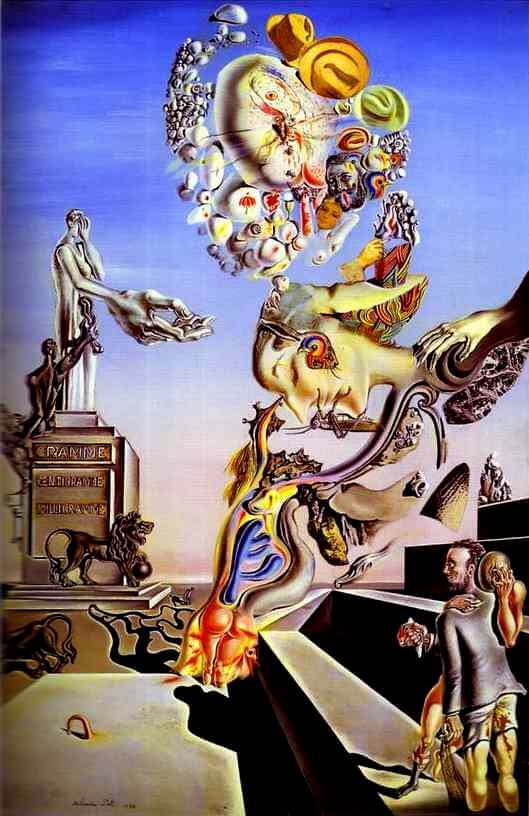The Lugubrious Game, 1929 by Salvador Dali

By the late 1920S Dali had embraced Surrealism and was developing the 'paranoiac-critical method' with which he plundered his psyche for images and associations. The Lugubrious Game (also known as Dismal Sport) was painted at Cadaques in the summer of 1929, in preparation for Dali's first one-man exhibition in Paris.
Like several other works of the period, its subjects were masturbation, made overt by the statue's huge hand and Dali's sexual fears and fixations. Among the objects in the spiraling column on the right is an image of Dali himself, his mouth covered by a grasshopper, a creature of which he had an intense, irrational horror. Sexual and scatological images abound.
The Lugubrious Game became the centerpiece of Dali's extremely successful Parisian exhibition at the Goemans Gallery in November 1929. The painting was bought by his future patron, the Vicomte de Noailles, who hung it in his dining-room between works by Cranach and Watteau.























